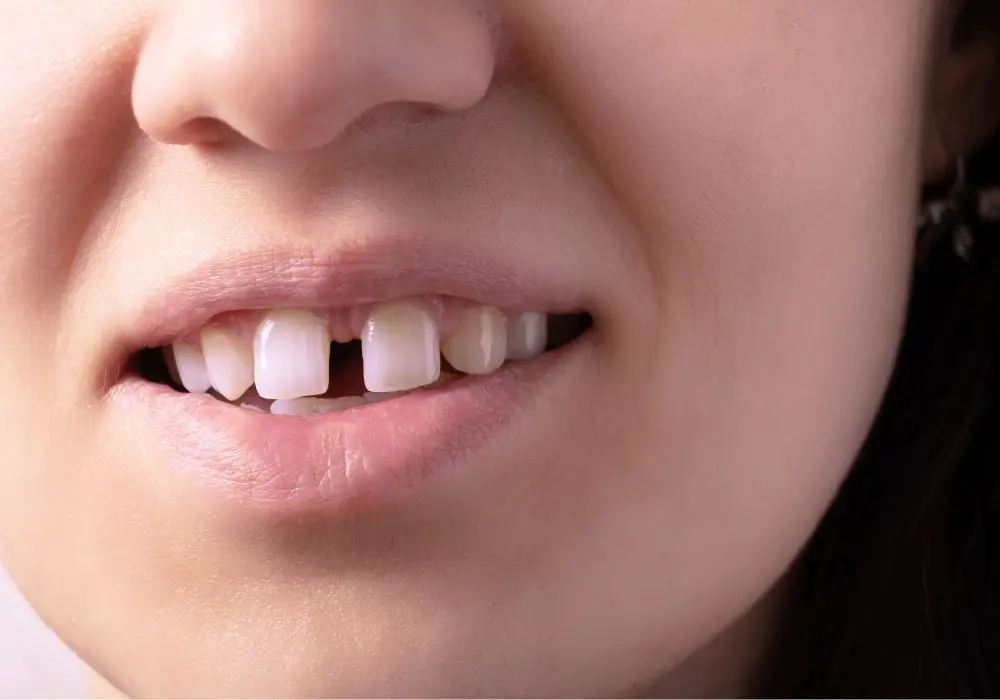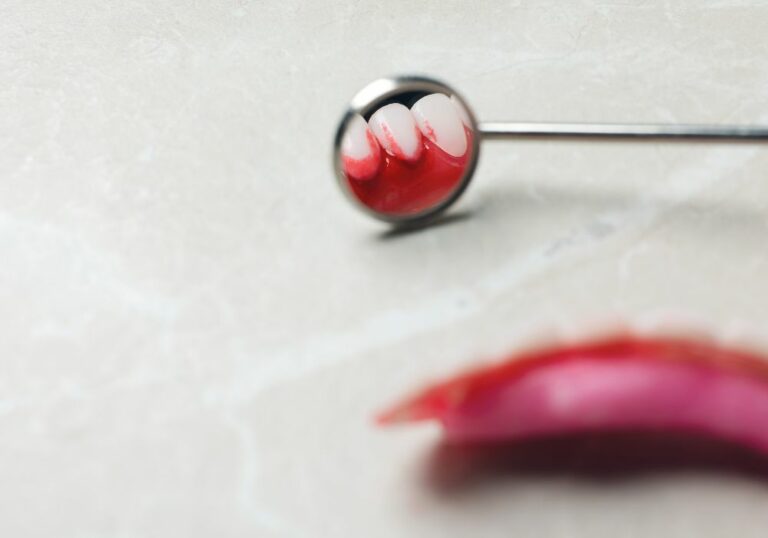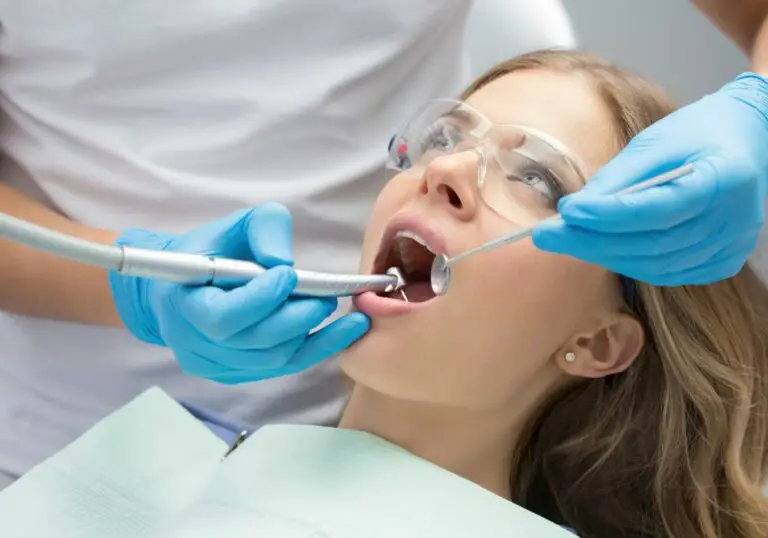Having a gap between your front teeth is a common cosmetic concern for many adults. While orthodontic braces provide the gold standard for closing spaces between teeth, not everyone wants to commit to 1-2 years of metal wires and brackets. Thankfully, there are some effective options to fix teeth gaps without braces.
What causes gaps in teeth?
Gaps between front or side teeth have several possible causes:
- Genetics – Spacing in teeth can run in families. Some people naturally develop with small spaces between most teeth.
- Lost teeth – If you lose a tooth due to decay, infection, or trauma, the remaining teeth can shift and drift over time. This creates empty spaces where teeth used to be.
- Abnormally shaped teeth – Teeth that are smaller or larger than normal, or are missing or crowded, can leave noticeable gaps beside them.
- Childhood habits – Chronic thumb-sucking, tongue thrusting, or extended pacifier use beyond age 3 can affect alignment of erupting teeth. This disrupts proper closure of dental arches.
- Poor jaw growth – A mismatch in size between the upper and lower jaws can leave gaps because teeth don’t fit together properly.
- Periodontal disease – Untreated gum disease causes damage to the bone around teeth. Eventually teeth loosen and shift, creating spaces.
Identifying the cause of your teeth gaps is the first step toward finding the right treatment approach.
What are my options to fix gaps without braces?
Several cosmetic, restorative, and orthodontic solutions exist to close spaces between teeth without metal braces:
Clear aligners
Clear plastic trays like Invisalign are the most popular removable alternative to braces. You’ll wear a series of aligners over weeks and months to gradually shift teeth into place. Aligners work for gaps of 1-2mm.
- Cost: $3,000 – $8,000
- Time: 6-18 months of full-time wear
- Effectiveness: Can completely close minor gaps. Larger spaces need supplemental treatments.
Teeth bonding
Bonding applies tooth-colored resin material to the surface of teeth. The dentist sculpts, contours, and polishes the resin to fill gaps and improve appearance.
- Cost: $250-$600 per tooth
- Time: 1-2 visits
- Effectiveness: Bonding masks gaps of 1mm or less. Multiple teeth can be treated at once.
Dental veneers
Veneers are custom-made thin shells of porcelain or resin placed over the front of teeth. By extending over the gaps, veneers can make spaces appear closed.
- Cost: $900 – $2,500 per tooth
- Time: 2-3 visits
- Effectiveness: Veneers hide gaps up to 2mm wide. Last 5-10 years with proper care.
Crowns
Dental crowns fully cover visible portions of teeth. Your dentist can shape crowns to look longer and mask the empty space between two crowned teeth.
- Cost: $800 – $3,000 per crown
- Time: 2 visits
- Effectiveness: Crowns create the illusion of closed gaps but require reshaping healthy teeth.
Implants
Dental implants fuse artificial titanium tooth roots to the jawbone for replacing missing teeth. Implant crowns can fill wider spaces with a natural looking and functioning prosthetic tooth.
- Cost: $3,000 – $5,000 per implant
- Time: 3-6 months
- Effectiveness: Implants permanently replace missing teeth. Require surgery and extended healing.
Dental bridges
Fixed dental bridges use false teeth fused between two crowns to bridge a gap left by lost teeth. The crowns anchor the bridge to neighboring healthy teeth.
- Cost: $700 – $1,500 per false tooth
- Time: 2-3 visits
- Effectiveness: Bridges provide a fixed solution for larger spaces where teeth are missing.
Which at-home options actually work?

Along with professional treatments, there are some do-it-yourself gap closure products to consider:
Teeth aligners
Buy an at-home clear aligner kit like SmileDirectClub, then take dental impressions and receive custom aligners in the mail. Treatment averages 4-10 months.
- Cost: $1,000 – $2,000
- Effectiveness: Minor gaps of 1-2mm can close with diligent aligner wear for most of the day. Results aren’t as predictable as professional treatment.
Gap band
These small elastic bands or “dental rubbers” wrap around two adjacent teeth and apply light pressure to push them together over time.
- Cost: $10 – $30
- Effectiveness: Helps close the narrowest gaps of less than 1mm. Wider gaps require other methods. Must be worn daily.
Tooth gap filler kit
DIY filler kits use moldable resin that you apply into the gap then cure with an LED light. The putty-like material provides a temporary fix of 6-12 months before needing replacement.
- Cost: $20 – $40
- Effectiveness: Disguises gaps less than 2mm wide. It’s not a permanent solution but offers an affordable temporary fix.
Interdental cleaning brushes
Using small interdental brushes to scrub between teeth can help tighten contacts between them as gum tissue recedes. This takes regular and diligent cleaning over months.
- Cost: $3 – $10
- Effectiveness: May slowly reduce gaps of less than 1mm in some cases. Improvement is gradual and results vary by individual.
What kind of results are realistic without braces?

Attempting to close teeth gaps without braces does have limitations. Here are some realistic expectations:
- Complete closure of gaps larger than 2mm is unlikely without braces. Minor 1-2mm gaps have the best prognosis.
- Non-braces options like aligners or bonding provide temporary improvement but gaps could reopen once treatment stops.
- Using cosmetic fillers to disguise gaps doesn’t address the underlying tooth positioning issues.
- Effective gap closure requires wearing aligners for the prescribed time of at least 20-22 hours per day.
- Dietary changes or lifestyle habits alone will not move teeth enough to close spaces.
- Without braces, final results may take 8 months to over 1 year to achieve. Relapse is possible.
- You may need additional cosmetic procedures like gum contouring or whitening for the most aesthetic outcome.
Keeping realistic expectations about the degree of attainable improvement can help guide your decision between professional and DIY treatment options. Speaking to an orthodontist or cosmetic dentist allows setting appropriate goals.
Professional treatments for moderate-to-large gaps
While home remedies work best for minor gaps under 2mm, more significant spacing of 2-3mm and beyond requires professional solutions for successful and stable closure of gaps between teeth. Here are top options recommended by dentists for moderate-to-large gaps:
Clear aligners
As mentioned, clear plastic trays like Invisalign straighten teeth and bring gaps together gradually over months of daily wear. More extensive movements are possible under an orthodontist’s oversight.
- Cost: $3,000 – $8,000
- Time: Typically 12-24 months
- Pros: Less noticeable than braces, can fully close larger gaps when monitored closely.
- Cons: Still a lengthy process, risks non-compliance without discipline.
Dental implants
Placing a dental implant fuses an artificial tooth root to the jawbone, then adding a realistic crown. Especially ideal for gaps from missing teeth.
- Cost: $3,000 – $5,000 per implant
- Time: 3-6 months fusing, 1 month crowning
- Pros: Permanent replacement for a lost tooth and gap; maintains bone stability.
- Cons: Invasive surgical procedure, higher cost, requires adequate bone density.
- Orthodontic treatment
Braces apply constant pressure through wires and brackets to bring teeth and gaps into proper alignment.
- Cost: $3,000 – $7,500
- Time: 12-24 months
- Pros: Addresses spacing issues decisively; straighter, properly aligned teeth.
- Cons: Dietary and lifestyle impacts during treatment, monthly adjustments.
Dental bridges
Fixed bridges use false teeth fused to crowns on neighboring teeth to bridge spaces left by tooth loss.
- Cost: $700 – $1,500 per unit
- Time: 2-3 visits
- Pros: Quickly fills larger spaces with missing teeth.
- Cons: Requires reshaping neighboring teeth, higher cost, eventual replacement need.
Jaw surgeries
Orthognathic surgery repositions the jawbones to achieve a better fit between upper and lower teeth. This may be necessary in cases of severely misaligned jaws contributing to spacing.
- Cost: $20,000 – $40,000
- Time: 1-2 years total treatment
- Pros: Permanently corrects jaw issues causing gaps.
- Cons: Highly invasive and intensive procedure with long recovery.
Key considerations for choosing gap closure treatment

As you evaluate the options to fix tooth gaps, keep these key factors in mind:
- Extent of gap – Wider spaces over 2-3mm need more aggressive solutions like braces or surgery.
- Cause of gap – Missing teeth or jaw growth discrepancies influence whether implants, bridges or jaw surgery are indicated.
- Long-term outlook – Will temporary cosmetic fixes suffice or do you want a permanent closure solution?
- Timeframe – Braces and aligners take months to years. Cosmetic options work faster.
- Commitment – Aligners demand 20+ hours of daily wear. Braces mean monthly adjustments.
- Costs – Your budget impacts whether professional vs. DIY options are feasible.
- Aesthetic goals – Do you want to enhance overall smile alignment beyond just closing the gaps?
Having a comprehensive orthodontic evaluation allows tailoring the treatment plan to your specific teeth gaps, oral health status, and personal preferences.
Maintaining closure of gaps after treatment
Successfully closing spaces between teeth doesn’t end once active treatment finishes. Maintenance and retention practices are crucial for preventing gaps from reopening.
- Wear any prescribed retainers as directed, usually nightly at first then progressively less often.
- Consider fixed retainers bonded behind the front teeth if you had braces or aligners. This keeps teeth locked in position.
- Get new clear aligner sets made every 5 years or so for “refresher” treatment, or have bonded retainers replaced.
- Continue six-month dental cleanings for removal of plaque buildup that allows teeth shifting.
- Protect teeth from trauma like blows or grinding that could displace teeth and open gaps. Wear a nightguard if you grind.
Commit to ongoing retention and you can enjoy the improvements from gap closure treatment for years to come. Temporary cosmetic solutions like bonding or veneers will require replacement every 5-10 years on average.
Closing summary
In closing, achieving noticeable closure of spaces between teeth is possible through both cosmetic and orthodontic methods without braces. Smaller gaps under 2mm can often be reduced or hidden through minimally invasive treatments like dental bonding, veneers, or DIY aligners.
However, optimal and stable closure of more significant gaps over 2-3mm frequently requires teeth straightening approaches like clear aligners or braces. Restorative solutions like implants or bridges become necessary when missing teeth are the cause of gaps.
Working with your dentist to set realistic goals based on the extent of your gaps, desired treatment speed, and budget will help determine the right treatment plan. Employing diligent retention methods after active gap closure treatment is crucial for maintaining results long-term.







